Three identical parallel conducting plates A, B and C are placed as shown. Switches S1andS2 are open, and can connect A and C to earth when closed. +Q charges is given to B.
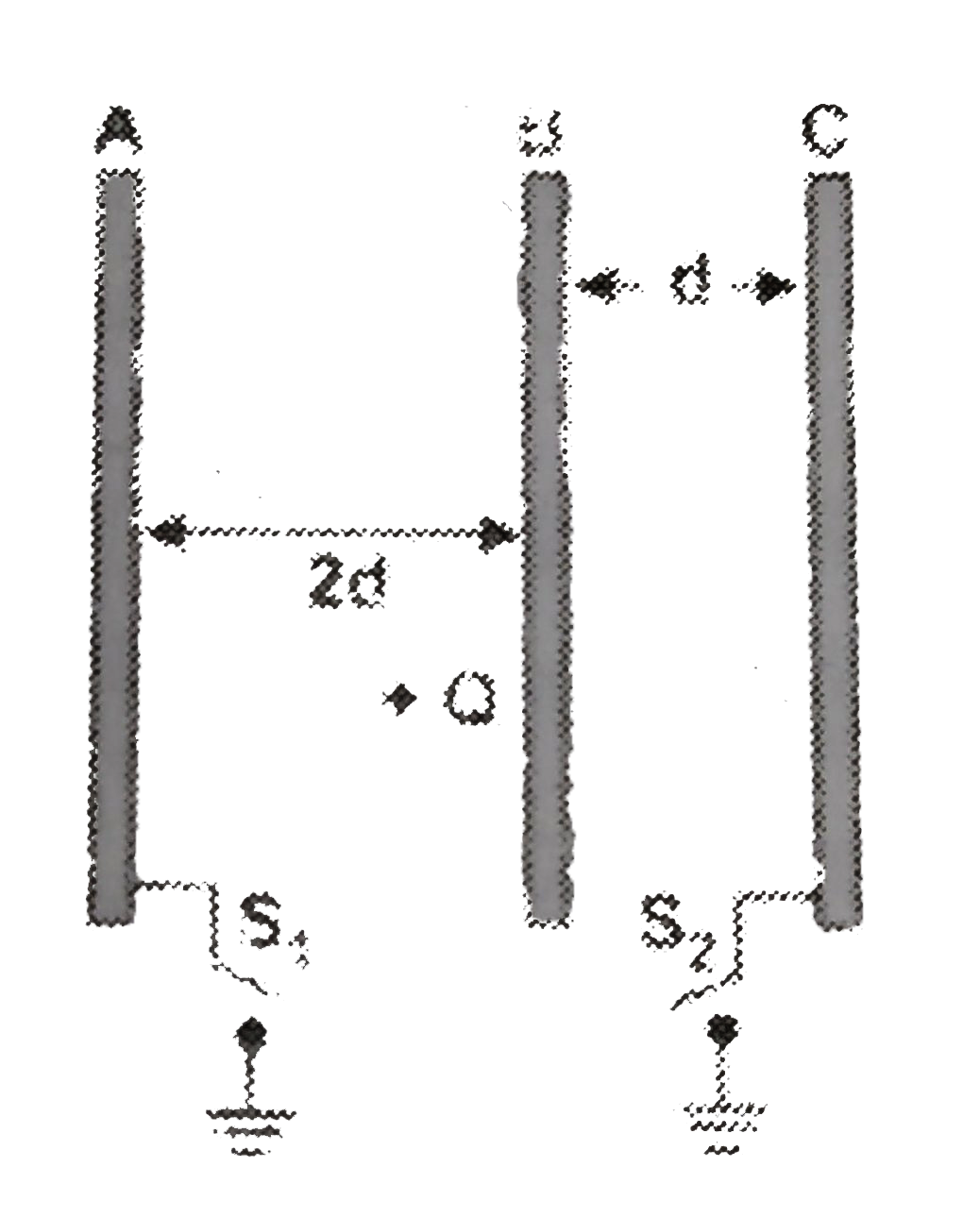
If S1is closed with S2 open, a charge of amount Q will pass through S1.
If instead S2 were closed with S1 open, a charge of amount Q will pass through S2.
If S1andS2 are closed together, a charge of amount 2Q/3 will pass through S2.
If S1andS2 are closed together, a charge of amount 2Q/3 will pass through S1, and a charge of amount Q/3 will pass through S2.
The correct Answer is:A, B, C
a.,b.,c.
When either A or C is earthed (but not both together), a parallel plate capcitor is formed withB, with ±Q charges on the inner surfaces. (The other plate, which is not earthed, plays no role.) Hence, charge of amount +Q flows to the earth. When both are earthedtogether, A and C effectively become connected. The plates now form two capacitors in paralle, with capacitances in the ration 1:2, and hence share charge Q in the same ratio.
C1=ε0A2d,C2=ε0AdC1C2=12
Now we can write
q1q2=C1C2=12
because potential difference of both the capacitors is same and q1+q2=Q.
Solving these, we get q1=Q/3,q2=2Q/3.
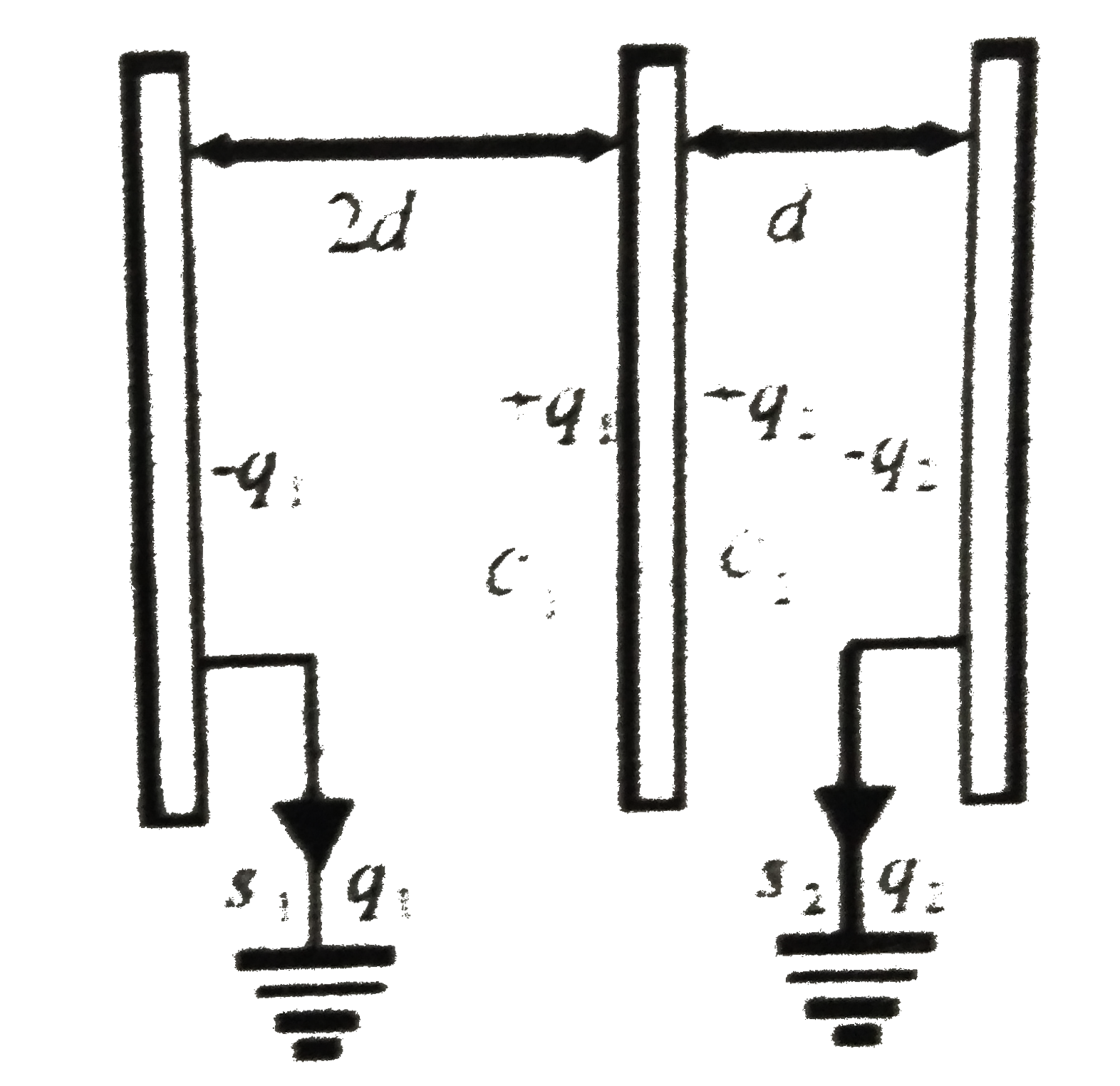
Similar Questions
Three identical parallel conducting plates A, B and C are placed as shown. Switches S1andS2 are opened and connect A and C to earth when closed. +Q charge is given to B.
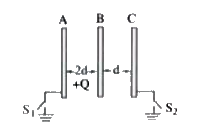 View Solution
View SolutionThree large conducting plates A, B and C having charges +q,-2q and +q as shown in fig. The gaps l1andl2 are small and >l2 The plates A and C are fixed and B is free to move. Neglest gravity. If switch S is closed, the plate B will start moving towards
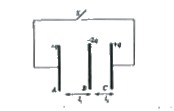 View Solution
View SolutionThree large identical conducting plates of area A are closely placed parallel to each other as shown (the area A is perpendicular to plane of diagram). The net charge on left, middle and right plates are QL,QM and QR respectively. Three infinitely large parallel surface SL,SM and SR are drawn passing through middle of each plate such that surface are perpendicular to plane of diagram as shown. Then pick up the correct option(s).
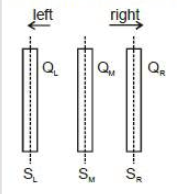 View Solution
View SolutionTwo conducting plates A and B are placed parallel to each other. A is given a charge. Q1 and B a charge Q2. Find the distribution of charges on the four surface.
View SolutionThree identical metallic plates are kept parallel to one another at separations a and b. The outer plates are connected to the ground and the middle plate is given charge Q. Then, the charge on the right side of middle plate is
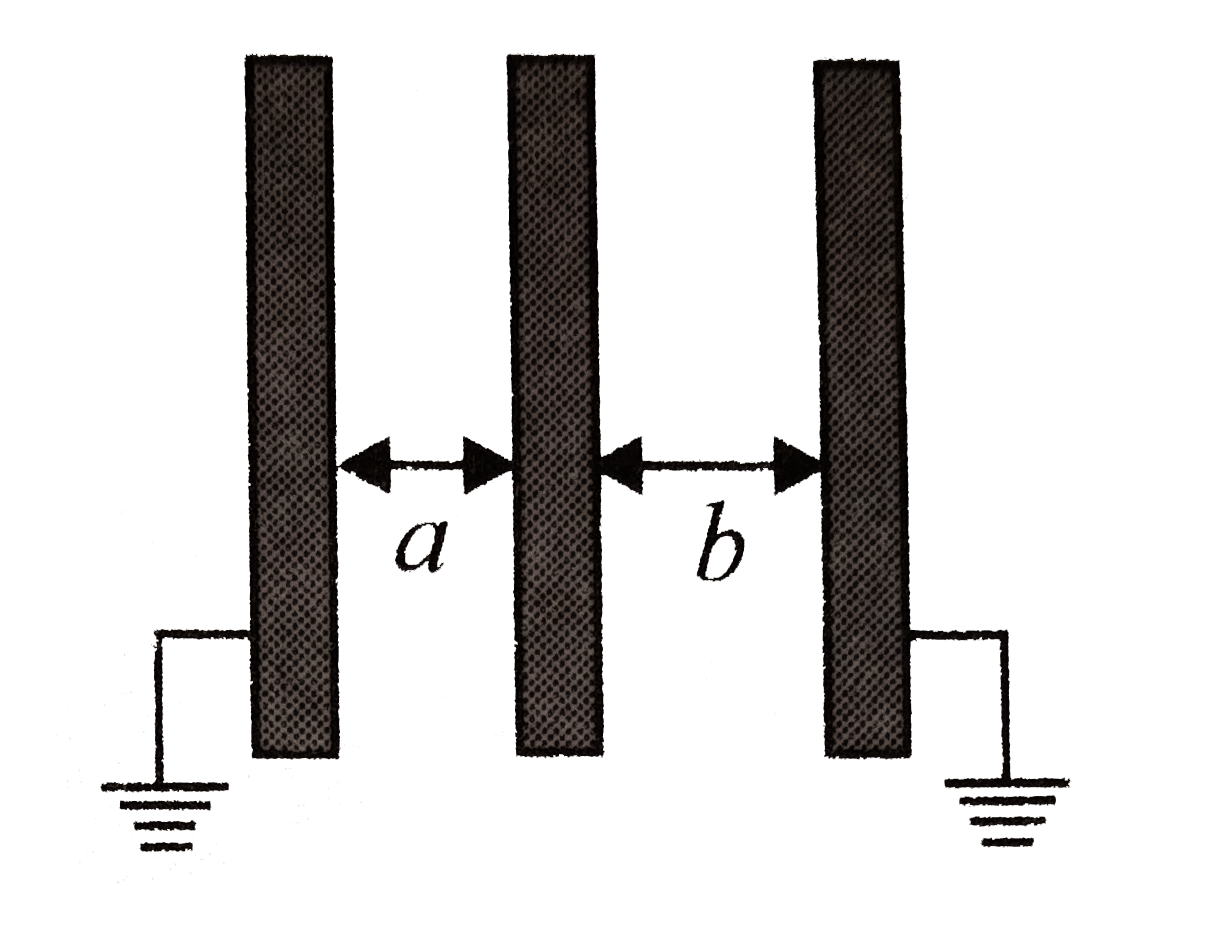 View Solution
View SolutionX and Y are large, parallel conducting plates close to each other. Each face has an area A. X is given a charge Q. Y is without any charge. Points A,B and C are as shown in the figure.
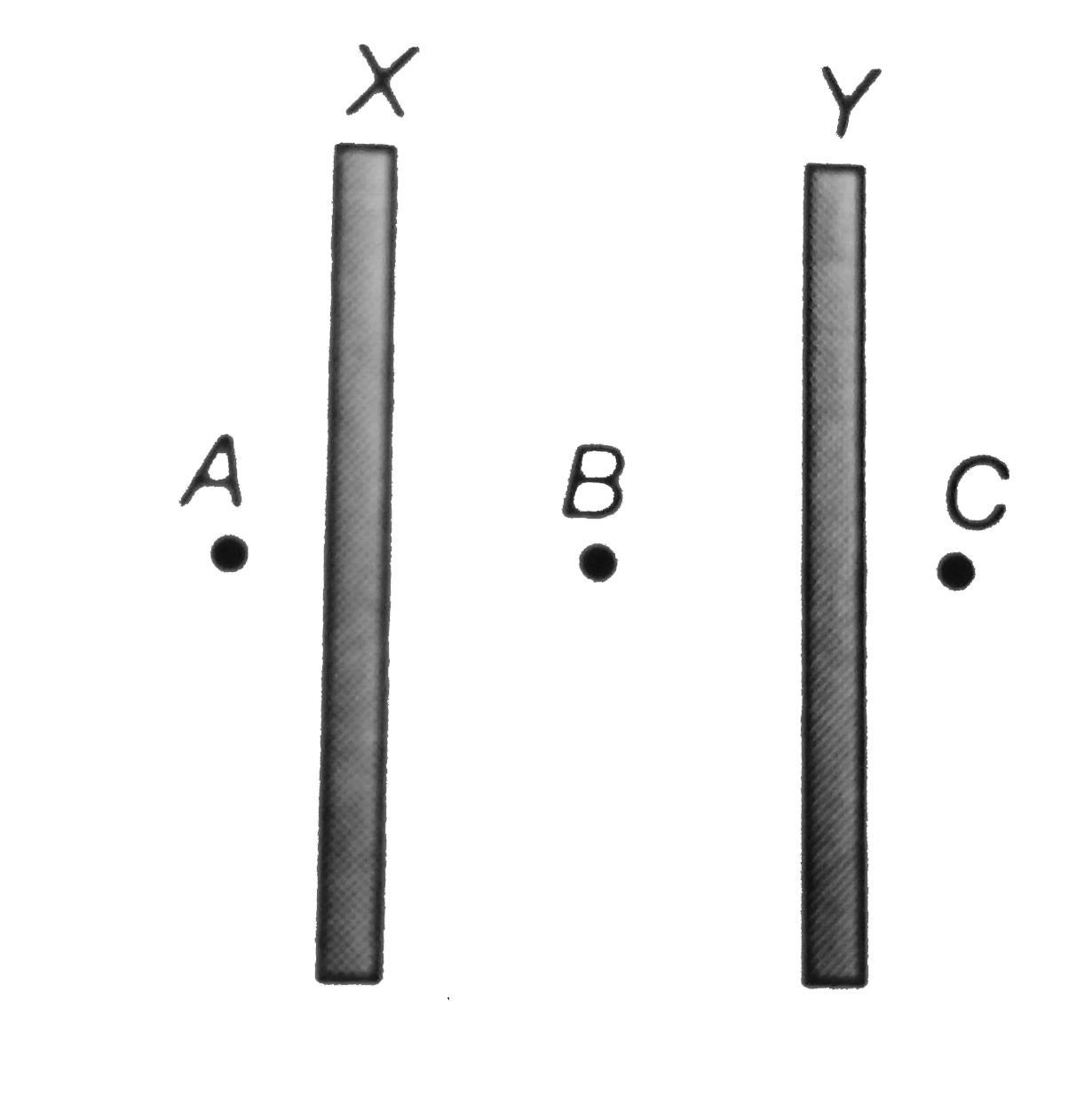 View Solution
View SolutionFour initially uncharaged thin, large, plane idential metallic plates A,B,C and D are arranged parallel to each other as shown. Now plates A,B,C and D are given charges Q,2Q,3Q and 4Q respectively. Plates A and D are connected by a mtallic wire while plates B and C connected by other metallic wire then after Electrostatic equilibrium is reached.
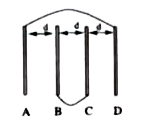
Total charge on plates after earthing plates A and B will beView SolutionFour large identical metallic plates are placed as shown in the Figure. Plate 2 is given a charge Q. All other plates are neutral. Now plates 1 and 4 are earthed. Area of each plate is A.
(a) Find charge appearing on right side of plate 3.
(b) Find potential difference between plates 1 and 2.
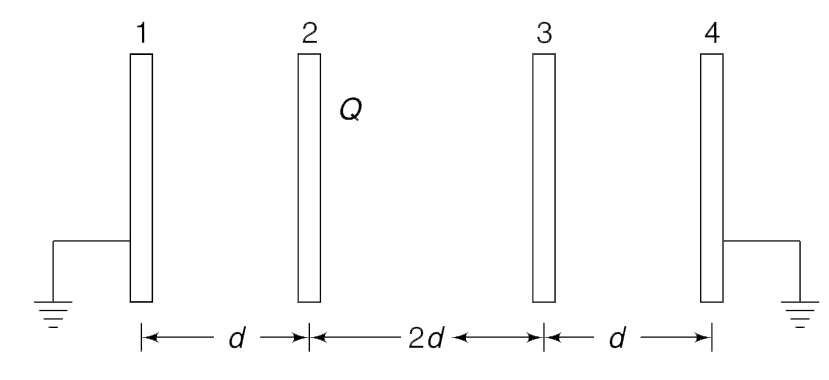 View Solution
View SolutionFour initially uncharaged thin, large, plane idential metallic plates A,B,C and D are arranged parallel to each other as shown. Now plates A,B,C and D are given charges Q,2Q,3Q and 4Q respectively. Plates A and D are connected by a mtallic wire while plates B and C connected by other metallic wire then after Electrostatic equilibrium is reached.

Total charge on plates after earthing plates A and B will beView SolutionThree identical metallic plates, each of area A, are kept at small separations as shown. Initially, charge Q, 3Q and 3Q are given to the plates A, B and c, respectively. Now, both the switches S1 and S2 are closed simultaneously. Then Charge flown through S1 and S2 are
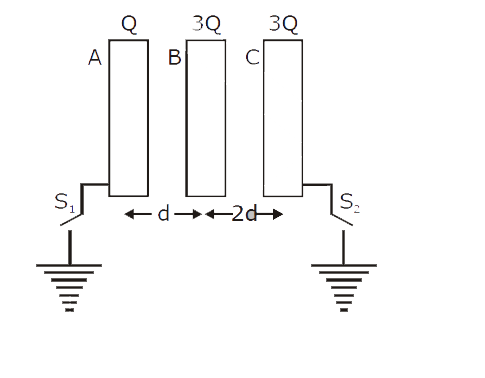 View Solution
View Solution

